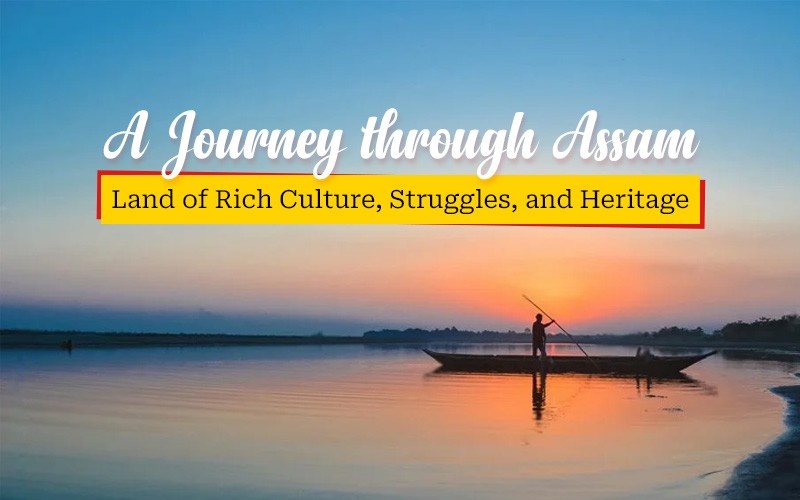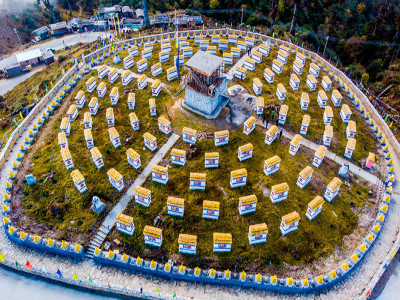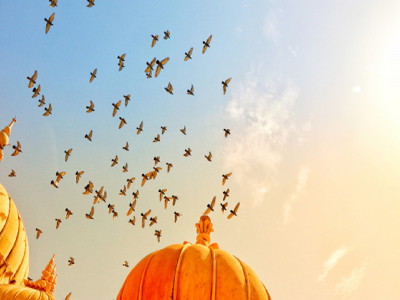
A Journey through Assam: Land of Rich Culture, Struggles, and Heritage
Nestled in the northeastern corner of India, Assam is a state of breathtaking landscapes, a rich history, and a melting pot of diverse cultures. The state, known for its tea gardens, silk weaving, and the mighty Brahmaputra River, offers a unique experience of nature and heritage. But beneath the beauty of its hills and valleys lies a story of resilience and identity shaped by centuries of history, folklore, and social struggles.
The Land of Brahmaputra: A River of Life
Assam’s story begins with the Brahmaputra River, one of the largest rivers in the world. Flowing through the heart of Assam, it has been the lifeblood of the state, nourishing the soil, supporting the livelihoods of millions, and shaping the lives of the people for centuries. The river is not just a geographical feature; it is a symbol of both sustenance and danger. During monsoon, it swells and floods, causing immense damage to crops and homes, but it also nourishes the land, making Assam one of the most fertile regions in India.
The river has a mystical presence in Assam’s folklore. It is believed to have been brought to the earth by the great saint and hero, Bhismaka, and his son, Bhishma. For centuries, the Brahmaputra has been central to the culture, spirituality, and economy of Assam. The Assamese people see the river as a goddess, revering her as "Brahmaputri."
Majestic Kaziranga and the Heart of Assam's Wildlife
While the Brahmaputra is an integral part of Assam, the state's natural beauty is truly showcased in its world-famous wildlife sanctuaries. One of the most significant conservation successes in India is the Kaziranga National Park, home to the endangered one-horned rhinoceros. With its tall grasslands and dense wetlands, Kaziranga is a sanctuary for various animals, including tigers, elephants, and wild buffaloes.
Kaziranga's efforts in wildlife conservation are a story of hope. The people of Assam, particularly the park’s rangers and local communities, have worked hard to protect the park from poaching and deforestation. This success shows the deep connection the people of Assam have with their natural heritage, and how conservation is a community-driven effort that benefits both the environment and the local economy.
The Ethnic Tapestry of Assam: A Diverse Culture
Assam is home to a rich mosaic of ethnic groups. The Assamese people, as well as indigenous communities like the Bodos, Karbis, and tea tribes, coexist in a delicate balance. Assam's cultural landscape is a reflection of this diversity, with different communities contributing their unique customs, languages, and traditions to the state’s heritage.
The state celebrates numerous festivals, the most famous being Bihu. Bihu marks the Assamese New Year and the start of the farming season, symbolizing the deep relationship between the people and their agrarian lifestyle. The festivities are filled with music, dance, and feasts. The folk dance called Bihu dance is performed with energetic movements, symbolizing the rhythms of nature.
The people of Assam take pride in their traditional crafts, particularly the exquisite Muga silk. Known for its golden hue, Muga silk is produced only in Assam and has become a symbol of Assam’s rich cultural heritage. It is intricately woven into stunning saris, stoles, and shawls, cherished by people across the world. The craftsmanship involved in weaving Muga silk is passed down through generations, preserving a link to Assam’s ancient traditions.
The Tea Gardens of Assam: A Global Legacy
Assam is synonymous with tea. The state's vast tea gardens, stretching across lush green hills, have given the world one of its most beloved beverages. The tea industry has its roots in the British colonial period when the British East India Company introduced tea plantations in Assam. Today, Assam produces some of the world’s finest tea, and its unique flavor is sought after by tea lovers globally.
For the people of Assam, tea is more than just a drink; it is a way of life. The tea tribes of Assam, originally brought from central India as laborers, now form a significant part of the state’s population. They have their own distinct culture, language, and traditions.
However, despite their contributions to Assam's economy, the tea tribes face many social issues, including economic struggles, lack of education, and poor healthcare.
The Social Struggles: Challenges for Assam’s Communities
Despite the state’s natural wealth and cultural vibrancy, Assam faces several social challenges. One of the most pressing issues is the Bodo conflict. The Bodo people, an indigenous group in Assam, have long fought for political autonomy and the recognition of their cultural identity. The Bodo movement, which seeks the creation of a separate state or autonomous region, has resulted in tensions between different ethnic groups in Assam.
Similarly, Assam has struggled with the question of illegal immigration from neighboring Bangladesh, which has led to tensions over resources and identity. The state has witnessed violent protests over the issue, most notably the Assam agitation in the 1980s, which demanded the identification and deportation of illegal immigrants. This issue continues to simmer, with the Assamese people grappling with questions of citizenship, identity, and belonging.
The struggle for the recognition of indigenous rights, economic equality, and a fair distribution of resources is ongoing in Assam. Many indigenous communities feel marginalized and are fighting for the protection of their lands, languages, and culture.
The Folklore and Legends of Assam
Assam is steeped in folklore, with legends that blend the divine and the earthly. One of the most cherished myths is that of Uphaar Bhaskar, the sun god, who is believed to have fallen in love with a mortal girl, and their love story became a symbol of longing and eternal separation. Such legends have shaped the identity of the people and their spiritual connection to the land.
The Kamakhya Temple in Assam holds an important place in the state's religious and cultural landscape. Located atop the Nilachal Hills, this temple is dedicated to the goddess Kamakhya, a powerful deity associated with fertility and divine feminine energy. The temple attracts thousands of devotees each year, especially during the Ambubachi Mela, a festival that celebrates the goddess's power and fertility. The temple is an important pilgrimage site for Hindus and symbolizes the blending of mythology, spirituality, and culture in Assam.
Assam's Role in India's Freedom Struggle
The history of Assam is also marked by its contribution to India's freedom struggle. Assam was one of the first regions in India to fight British colonialism. Leaders like Kanaklata Barua, who is remembered for her bravery and sacrifice, played a significant role in inspiring Assamese youth to join the freedom movement.
The Assamese renaissance, led by thinkers like Sarat Chandra Goswami, sparked an intellectual revolution in the 19th and early 20th centuries. The cultural revival fostered a sense of Assamese identity that continues to shape the state today. The influence of Assamese scholars in literature, politics, and education helped unite people across communities to resist colonial rule.
Late.Kanaklata Barua
Conclusion: The Assam That Needs to Be Heard
Assam is a state that offers a rich blend of natural beauty, cultural diversity, and historical significance. It is a place where the past and present coexist, where traditional crafts meet modern struggles, and where folklore and history are deeply intertwined with the lives of its people.
Yet, Assam’s struggles – social, political, and cultural – cannot be ignored. The people of Assam continue to face challenges, but their resilience and determination to preserve their heritage and identity are unshakable. As we explore the beauty and history of Assam, it is essential that we also understand its struggles and the voices that seek justice, recognition, and a fair future.
In the end, Assam’s story is not just one of hardship, but also of hope, strength, and perseverance. It is a story of a land that needs to be heard, understood, and celebrated, for in its beauty, its history, and its challenges, it mirrors the complexities of India itself.
Disclaimer: The opinions expressed in this article are those of the author's. They do not purport to reflect the opinions or views of The Critical Script or its editor.

Newsletter!!!
Subscribe to our weekly Newsletter and stay tuned.

















Related Comments